What’s it really like being a WorldTour pro? A day in the life of Harry Tanfield
Does the glitz and glamour make up for the merciless physical strain? To find out, Jim Cotton headed to Spain to spend a full 24 hours shadowing Katusha-Alpecin’s Harry Tanfield
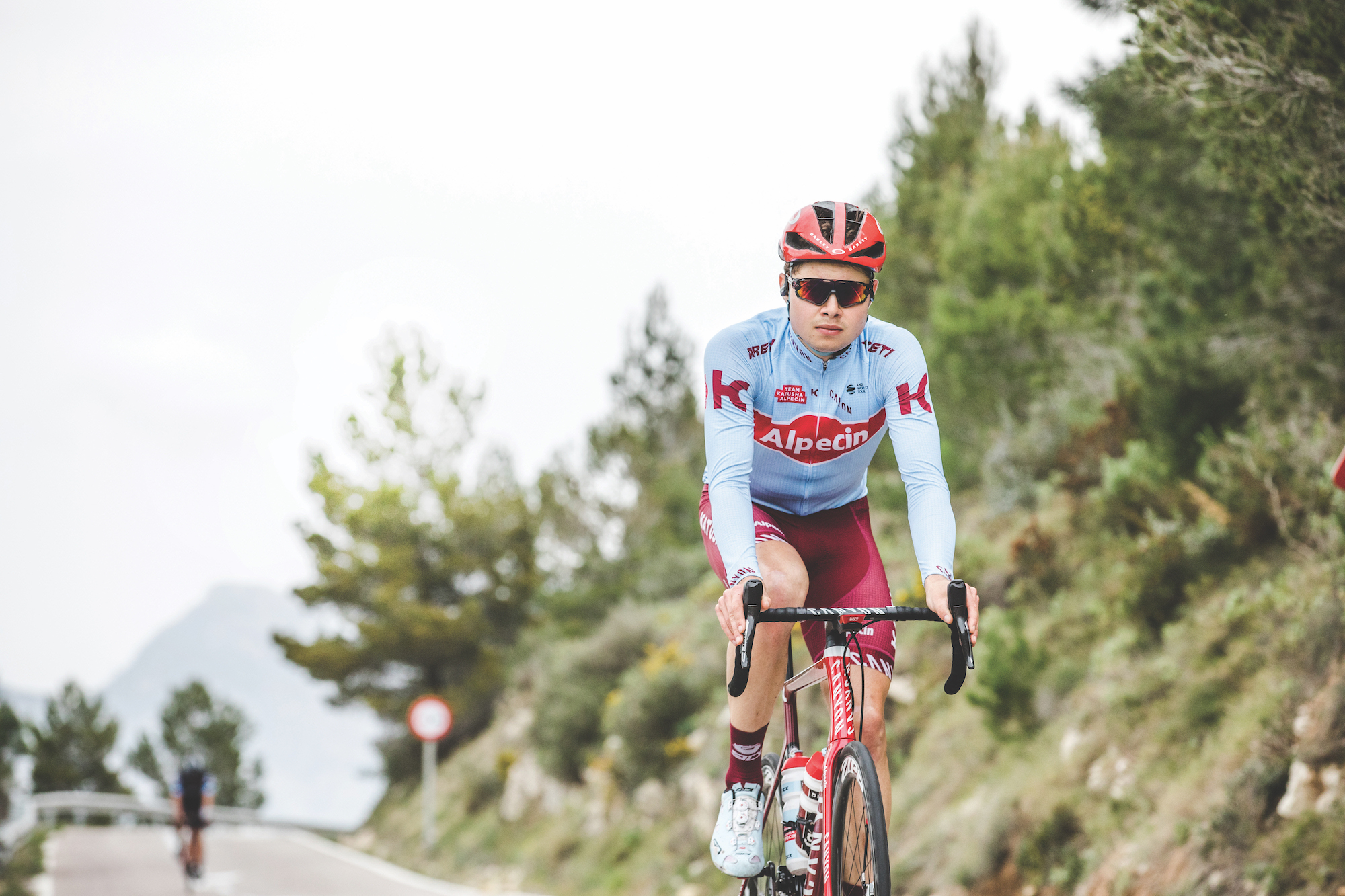
What does a pro rider get up to when they’re not racing? What makes up a normal day in the life of a super-fit young athlete paid to ride their bike across sun-drenched Continental landscapes? They’re living the dream, we cry! Surely it’s all masseuses, mechanics and chef-prepared smoothies? But does the reality align with our fantasies? Let’s find out, shall we?
Last month Cycling Weekly was lucky enough spend a full 24 hours with Harry Tanfield at his training base in Spain. We wanted to learn about the daily realities of being a top-flight pro, away from the cut and thrust of racing — and find out which parts of an elite protocol we might benefit from applying to our own routines.
Tanfield, 24, who is only a few months into his first season in the WorldTour with Team Katusha-Alpecin, invited us to stay at his villa near Altea, on Spain’s Costa Blanca. He’d rented the place for most of February and March and was sharing with several other young UK riders and friends — some fellow pros, some enthusiastic amateurs. This stretch of Spanish coastline is a training mecca for all levels of rider, thanks to its more or less guaranteed sun and varied terrain, with hour-long climbs as well as flat coastal roads. The hospitable young Yorkshireman agreed to let us follow his every move on a day of training that fell just two days after his first major WorldTour races, the Belgian Classics Omloop Het Nieuwsblad and Kuurne-Brussels-Kuurne.
So here we are: it’s mid-March and ‘sunny Spain’ is earning its reputation — there’s barely a cloud in the sky; the temperature is already above 20ºC; and there’s a convivial, busy atmosphere in the villa. It’s a tough life sometimes, writing for CW, but someone has to do it…
8:30-9am: The day begins
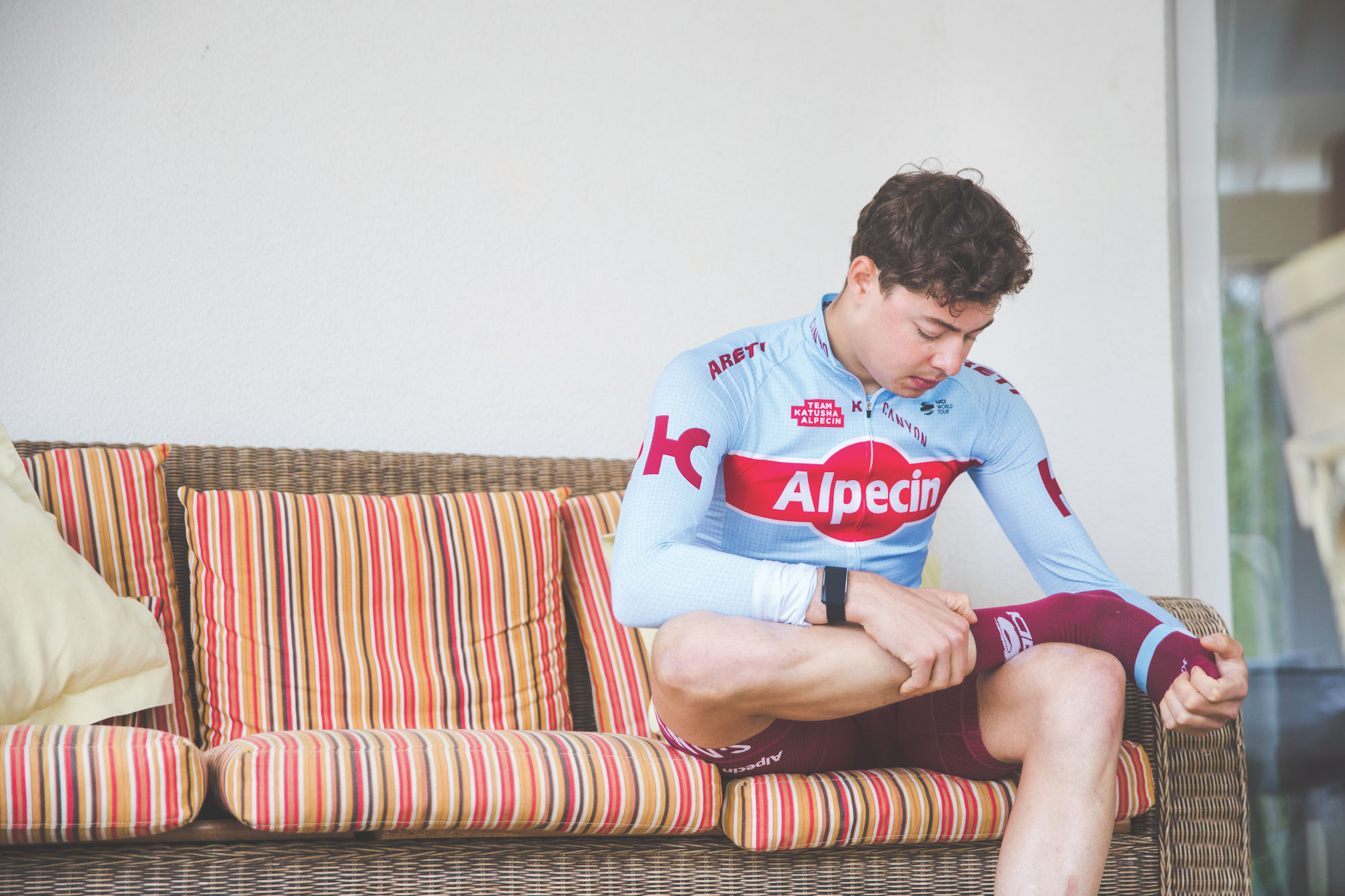
Tanfield has the time available to be flexible, so it makes sense to ride during the middle of the day when the sun is strongest. No need for an early start. His alarm buzzes the day into action at 8.30am.
On waking, Tanfield jumps on the scales — but note, this isn’t a daily habit. He is not under weight loss orders from the team, but is keen to lose a few kilos. “Racing up those bergs at the weekend made it really clear that every kilo counts,” he says. “It can make a vast difference to the power you need to put out to keep up.”
Get The Leadout Newsletter
The latest race content, interviews, features, reviews and expert buying guides, direct to your inbox!
Hydration is also at the forefront of Tanfield’s mind upon waking; he takes on around 500ml of water first thing — and keeps a bottle in the fridge as a prompt.
CW says: Part of Tanfield’s job is to maintain optimal body composition. If you’re looking to cut a few kilos, avoid getting obsessive about it. The risks of disordered eating are real. Don’t count calories and don’t weigh yourself more often than once every 10 days.
9:30-10am: Breakfast
To maintain optimal body composition, pro cyclists adjust their fuelling to the training load of the day: carbohydrate intake is increased on harder days, and cut back on the easier days.
Tanfield’s ride today is straightforward: three hours in Zone 2 with no intervals. It is a ‘low-carb’ ride, meaning Tanfield has a very low-carbohydrate breakfast and minimal fuel on the bike.
“These sessions are all about riding super-easy and keeping in the fat-burning range,” he says. “The more I do this, the more my body becomes adapted to using fat for fuel, and the more watts I can push before I start burning carbohydrate. Being able to preserve my limited carb stores for the end of races is key so that I can put in the big efforts when they matter most.”
Tanfield’s breakfast is light yet nutritious: one piece of toast, three poached eggs, some smoked salmon, and salad. “The salad I throw in just to make me feel like I’m eating something more substantial,” he comments. “Otherwise it feels like I’ve had nothing.”
What would a normal breakfast look like? “Before a harder, longer ride or one with intervals, I’d probably double up on the bread and have a bowl of muesli or porridge as well.”
CW says: Riding slow really can help you go fast, and many of us are guilty of not spending enough time riding at lower intensities. However, low-carb or fasted rides should not be performed more than once a week — and must be planned carefully so as to avoid under-fuelling. The addition of extra bread and oats for harder rides is essential so that Tanfield has the carbohydrate to fuel his efforts.
10:30am – 2.00pm: Training
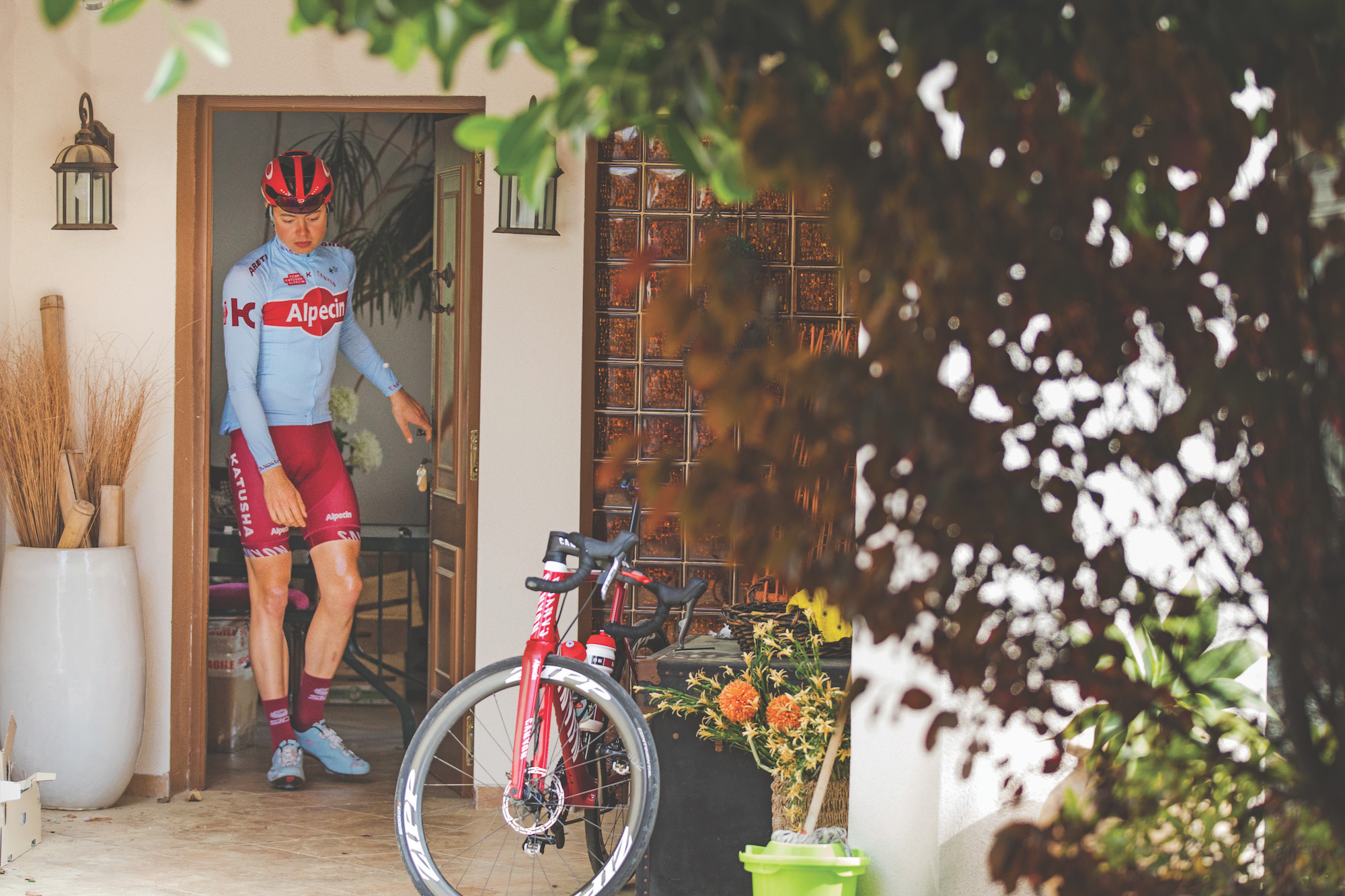
Tanfield’s introduction to WorldTour racing over the weekend immediately preceding our stay with him, involved mixing it with hardened Classics veterans, battling harsh winds and drizzling rain.
The young rider was expected to support his team leaders and gain experience in the peloton, but was not obliged to finish. Thus, he pulled out two-thirds of the way through each race.
“The fight for position in the bunch was outrageous,” Tanfield describes the baptism of fire. “Everyone is at such a high level that they just don’t get tired. At Omloop, I was dropped with about 20 others in some crosswinds. Someone in front lost the wheel for a second then that was it, the race was gone.” He doesn’t spell it out, but from his tone of voice I sense that these races were even tougher than he had been expecting.
Given the weekend’s exertions, today (Tuesday) is a relatively light day of riding for Tanfield. A typical day in the saddle for Tanfield would be four to five hours. After the stress of consecutive days of racing just two days prior, he is being given time to recover and adapt, particularly as he didn’t ease off his training in advance of the races. “I didn’t taper before Omloop and Kuurne; they weren’t big goals for me, and at this stage in the season I am just trying to adapt to managing high workloads.”
Operating independently without a team around him, Tanfield engages in a bit of bike tinkering and fettling before we roll out, fine-tuning the shifting on his new SRAM eTap AXS groupset. Without team mechanics to rely on, you’ve got to be handy with your Allen keys when you’re training for 25 hours a week.
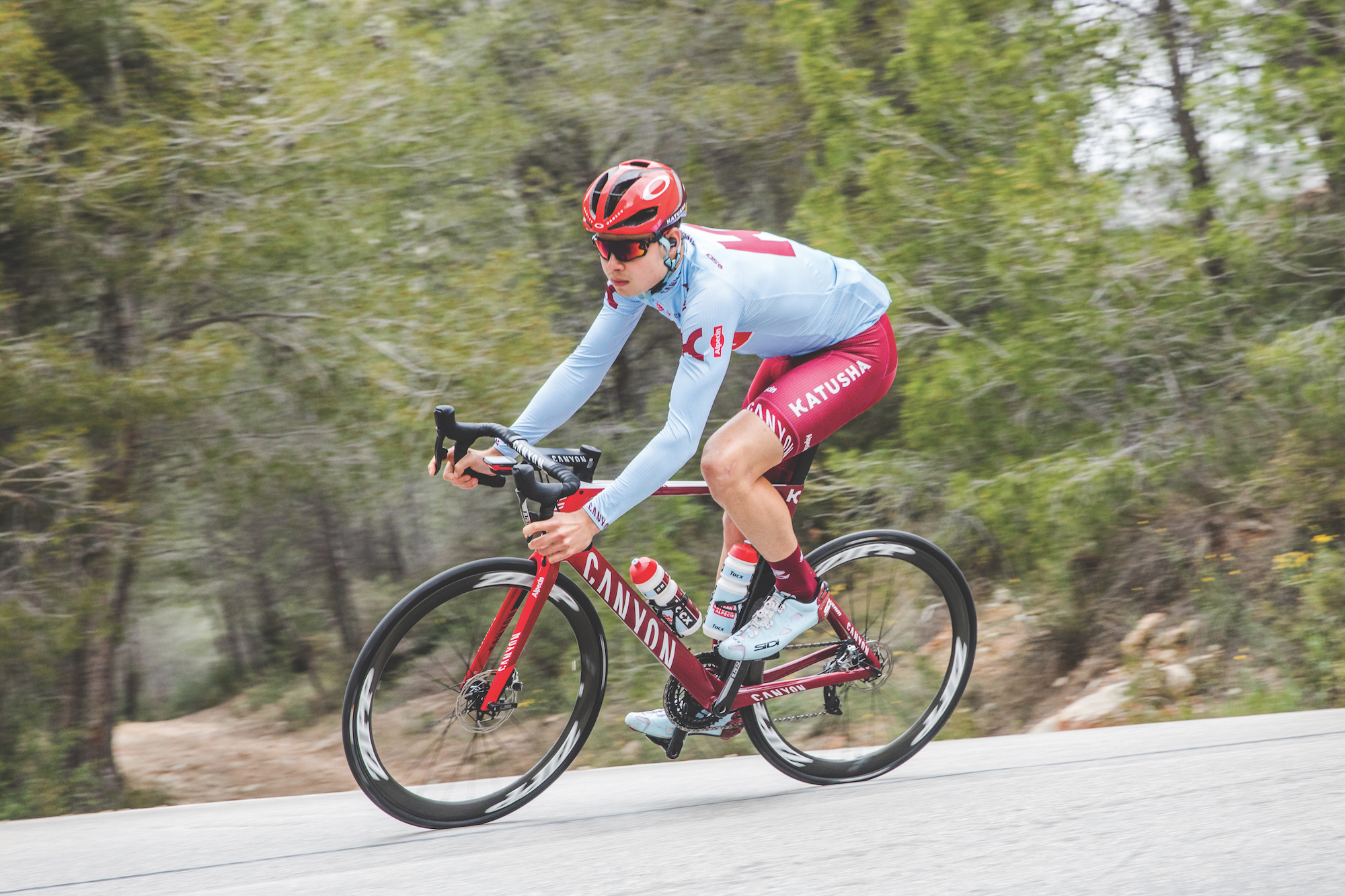
Tanfield is joined on the session by villa-mate Jake Grey from Ribble Pro Cycling. Staying in an area buzzing with talented young UK riders means Tanfield is rarely hard up for company. “I would much rather ride with others — doing our own efforts but cruising together between them — as I know that later in the year I won’t always be able to; people won’t be around, or my training will be too specific.”
The route is largely flat, save for a trip up and over the iconic Coll de Rates. Tanfield chooses a flat route so that he can keep his power and heart rate steady and consistent, and avoid coasting, to maintain the steady fat burn required.
2-3pm: Post-ride meal
Although we’re back home by 2pm, on a typical training day Tanfield would have been in the saddle at least an hour longer, and often finishes with a quick trip to the gym on the way home.
“I do stuff that’s complementary to the bike, such as leg presses, but nothing intense,” Tanfield says of his gym work. “If I think something is going to affect my intervals the next day because I’ll be tired or have aches, I don’t do it.”
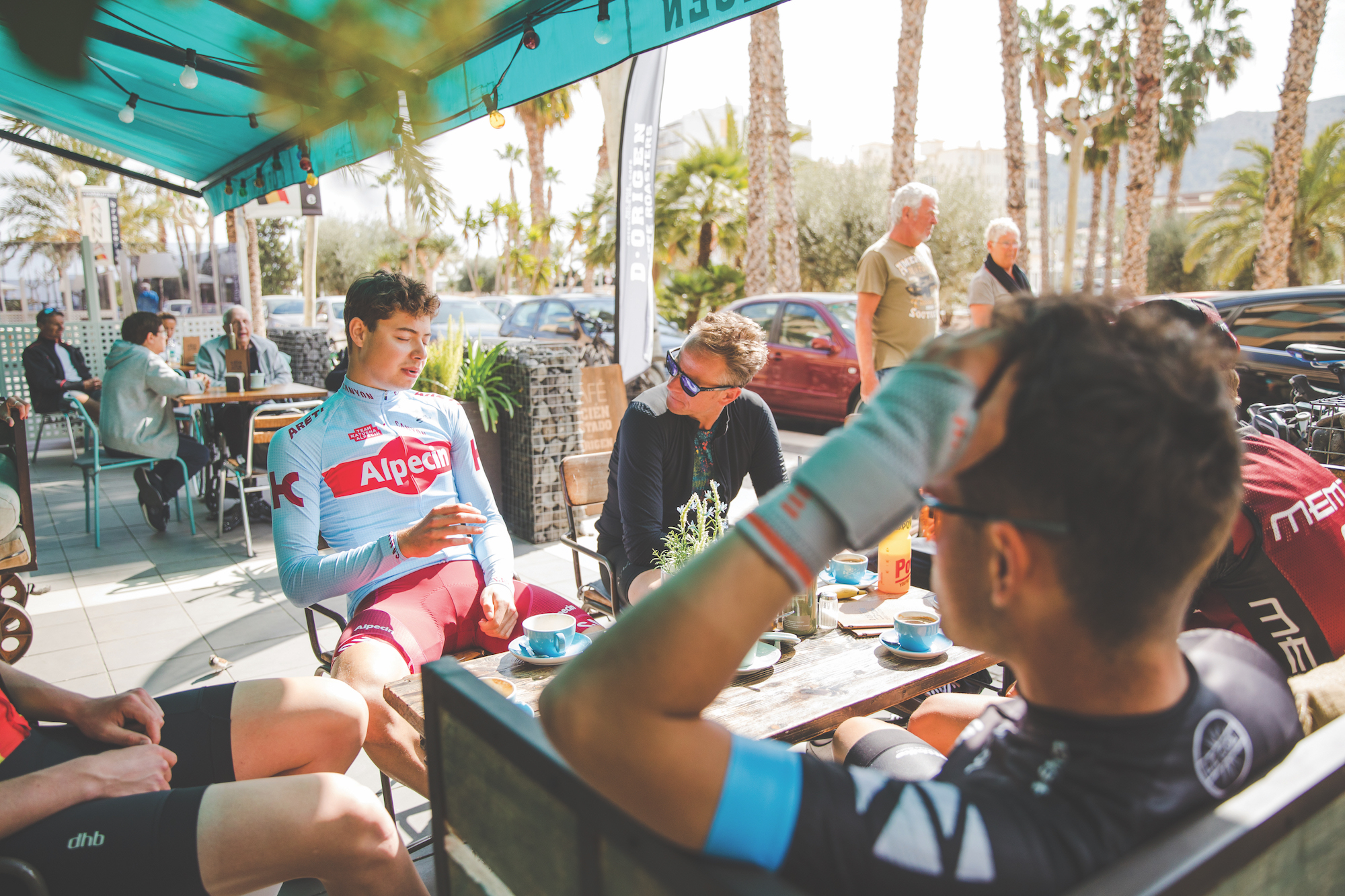
Tanfield fuelled today’s 3.5-hour ride with just water and a few bites of an energy bar, and it’s clear he’s hungry when he gets back. As soon as we’re home, before he’s even shut the front door, he is straight to the fridge. In a matter of minutes he’s pulled together a nutritious but relatively low-carb meal, consisting of a Spanish omelette, tuna salad and a cheese wrap.
“Even after a higher-intensity day I don’t go mad at lunch, as I eat a lot during and before the session,” he explains as he eats, still fully kitted-up. “Also, after a long ride and trip to the gym, I’m not home till around 4pm or 5pm, and I always aim to have dinner at around 7pm, so I don’t need a huge feed to last me through — just enough to promote my recovery.”
3.00pm: Stretching
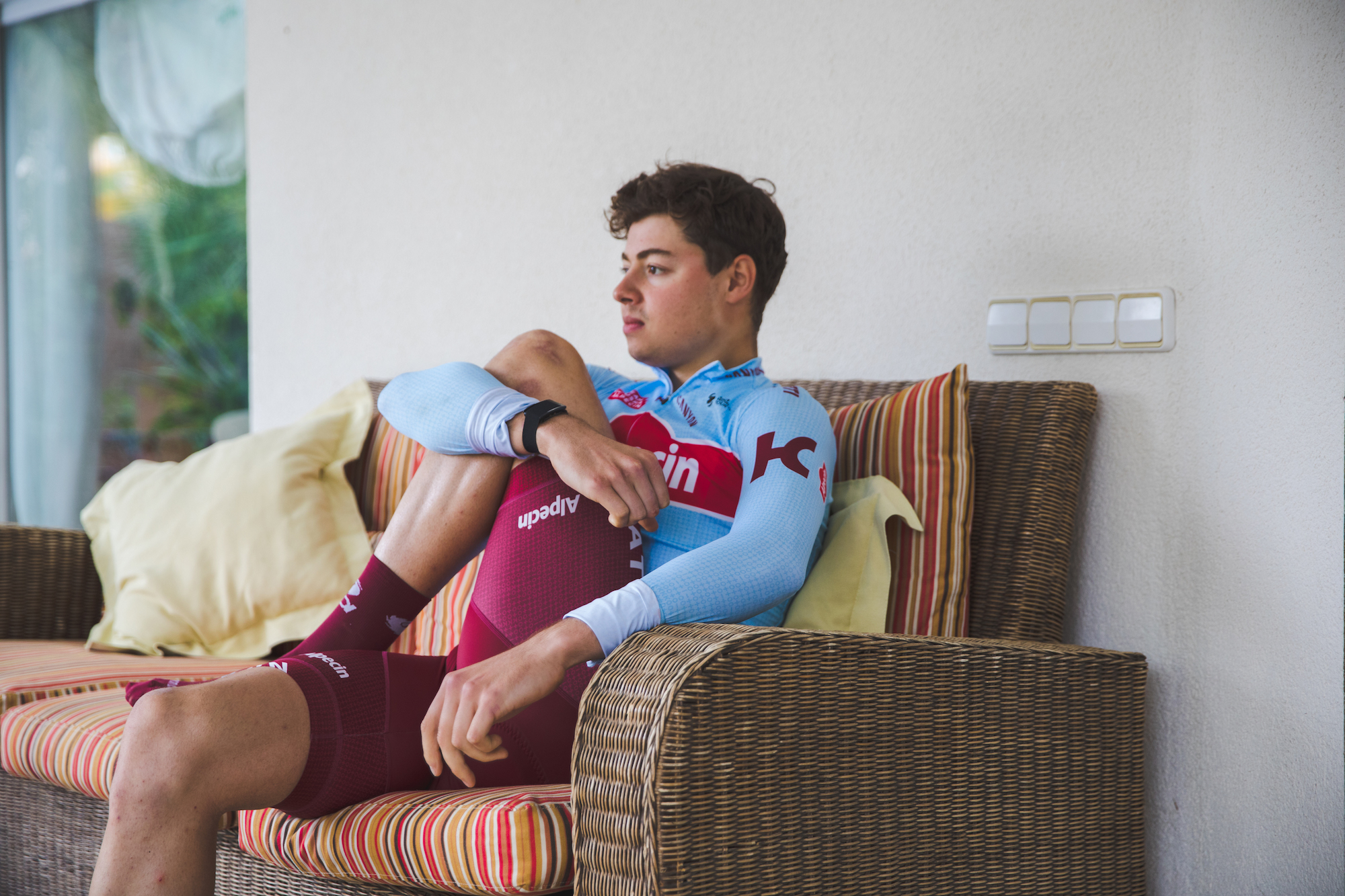
Having eaten, and still dressed in cycling kit, Tanfield goes through a brief and basic set of stretches.
“I try to stretch as soon as possible after getting back. I know I won’t do it otherwise. I don’t have a set of specific stretches, I just work on areas that feel like they need attention.”
The dreaded foam roller isn’t part of this post-ride routine; Tanfield gets manual massage whenever he is with the team for training or races, and so saves the punishment for then.
CW says: If you’re guilty of neglecting your post-ride stretching or foam rolling, get it out of the way as soon as you’re back. Doing a quick 10-minute routine while still in your kit feels a lot less hassle than trying to fit it into your schedule later in the day — but get out of your kit and showered ASAP afterwards to minimise the risks of saddle sores.
4pm: Recovery and relaxation
Tanfield’s afternoons are largely spent at the laptop or on the phone. “There’s always admin-related stuff to do: booking camps, discussing training with coaches, chatting with my girlfriend.”
Not one for napping or lazing on the sofa, Tanfield gets all his sleep in one hit at night. He does try to optimise recovery, though, by staying off his feet and keeping them elevated as much as possible.
So it turns out life in the WorldTour is not endless training camps, luxury hotels and soigneurs attending to every need. After two 10-day Majorca training camps, Tanfield’s time with the team is limited to before and after races. When not at his laptop, Tanfield carries out the same everyday chores that the rest of us have to: he hangs out laundry, tidies the kitchen, and takes out the bins.
7-8pm: Dinner
Tanfield’s a keen cook and enjoys spending time in the kitchen. Tonight he prepares dinner for all four of us in the house: a turkey and vegetable curry, served with rice and a side of mixed green vegetables. As per Tanfield’s lunch, it’s not the carb-fest you might expect; the focus is on vegetables and protein, with a modest portion of rice.
Tanfield doesn’t weigh his food or track his calories; he’s happy to rely on instinct and self-discipline to know when he’s had enough. “You don’t eat until you’re full. If you feel full, you’ve eaten too much. You should always leave the table feeling you could eat a bit more.”
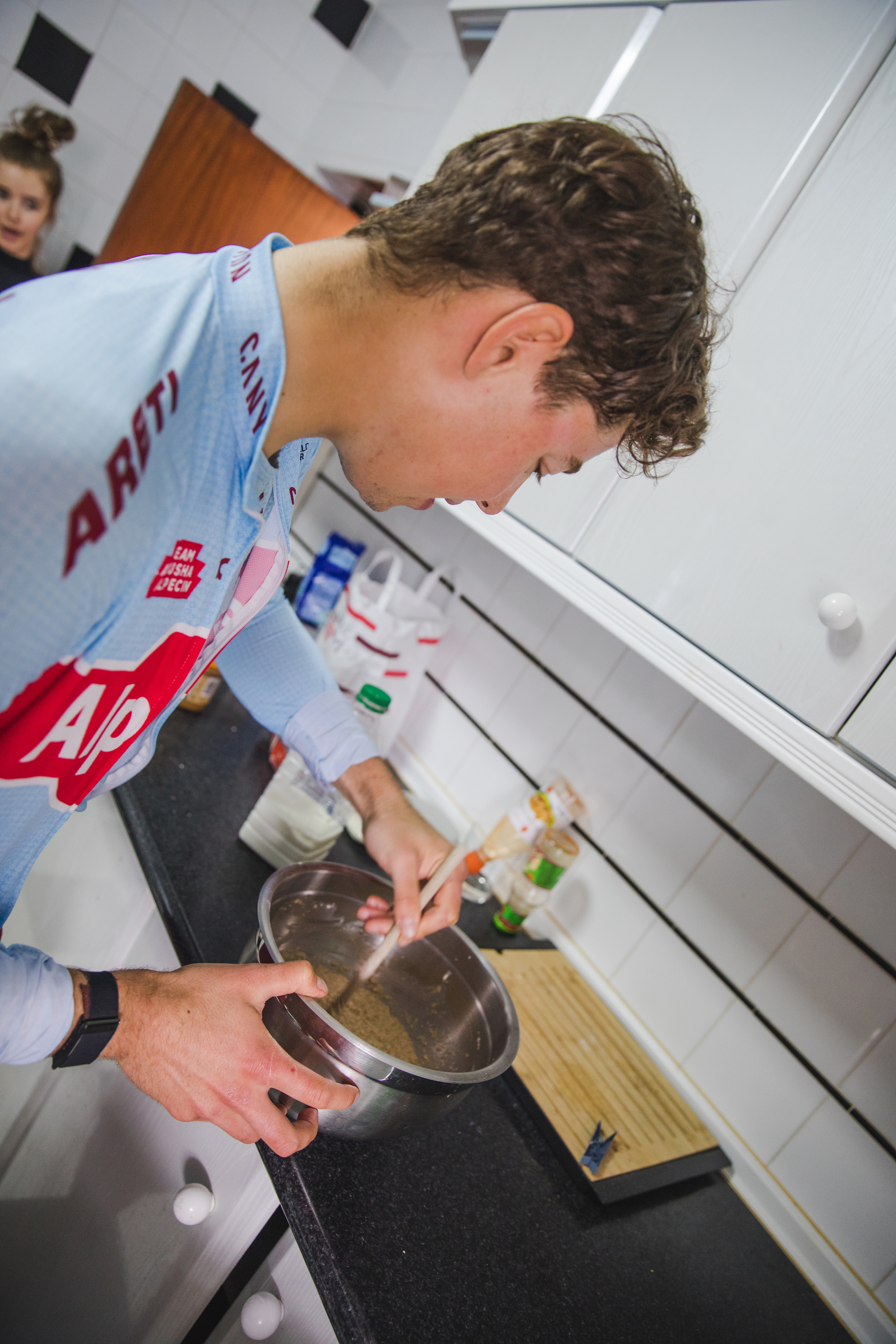
Acutely aware of the importance of power-to-weight ratio, Tanfield is controlling his intake to optimise his body composition: “As I’m doing a hard ride tomorrow, around five hours with some high-power efforts, I’ll have a bit more carbohydrate for dinner, but not much. I prefer to load my calories around breakfast and on the bike, as required to match my training needs; so dinner is pretty similar every night.”
In the WorldTour, weight and nutrition are forever under the microscope, even for a rider like Tanfield who is more focused on Classics and time trials than long mountain climbs: “You’re constantly walking a tightrope. You need to fuel precisely — you don’t want to under-fuel and impact performance, but you don’t want to over-fuel and gain weight.”
Even so, Tanfield doesn’t deprive himself of the odd treat. “I don’t often have a proper dessert, though I do usually have a cup of tea or cocoa — anything I can dunk a biscuit into! Although I am looking to lose a bit of weight, you’ve got to stay normal and balanced with food. If you restrict everything, you’ll crack eventually.”
What type of biscuit, we wonder? “I’m a rich tea kind of man. You can eat twice as many for the same number of calories as most other biscuits, which is a bonus — they’re a low-density biscuit!”
The rules are further relaxed most Sundays, when Tanfield can be found at the local Irish bar having a slap-up roast — you can take the boy out of Yorkshire…
CW says: If you’re trying to lose weight, take cues from Tanfield: keep a sense of normality and balance — cutting out all treats is unsustainable in the long run.
8-10pm: Evening wind-down
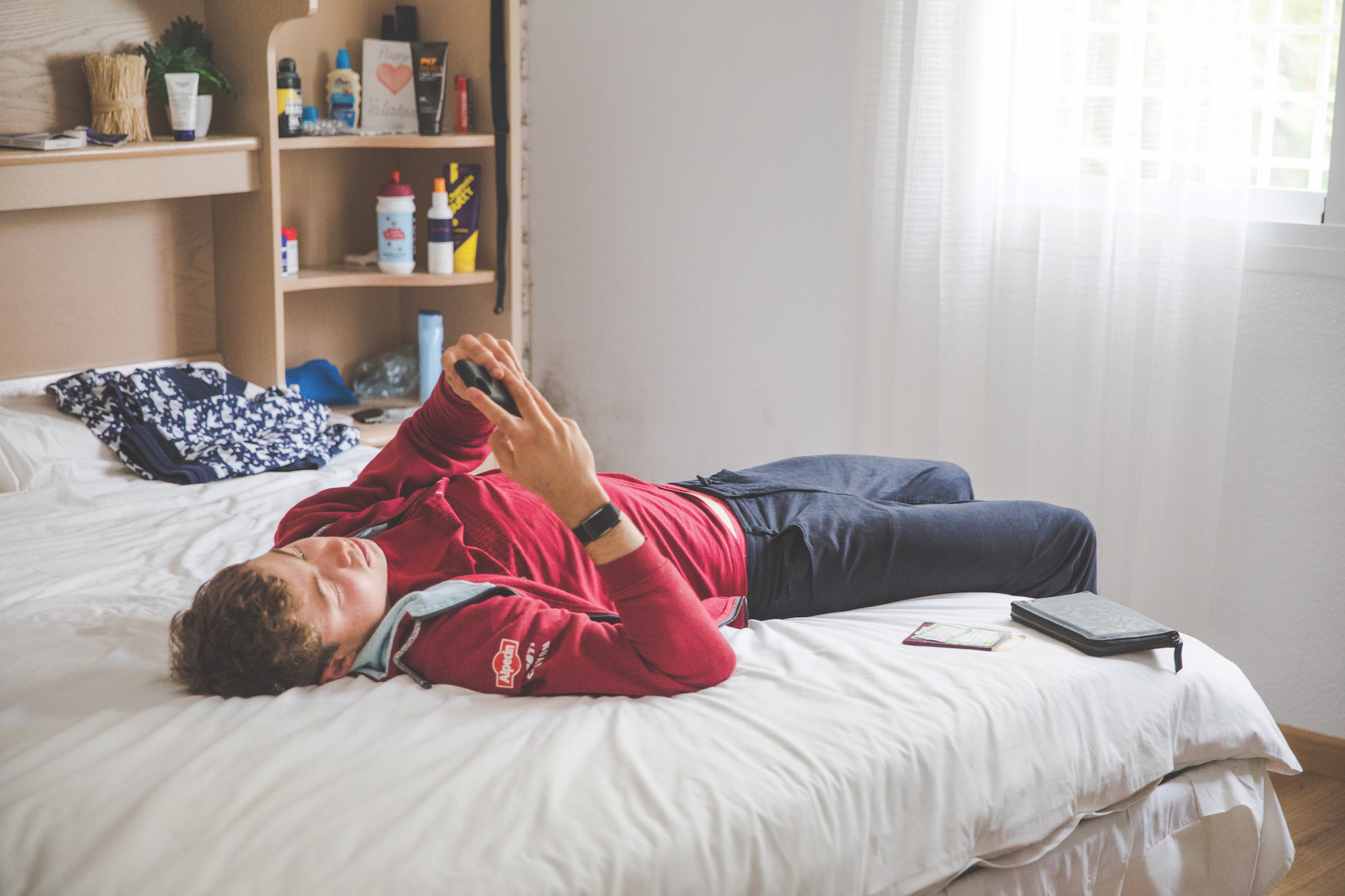
Tanfield’s not one for box-set binges and Netflix marathons; if he feels like watching something, he tunes in to race coverage on Eurosport. Rather than hours of television, evenings revolve around chatter with housemates, social media and web-surfing.
10:30pm: Time for bed
Bedtime comes early, at around 10.30pm every night. Tanfield recognises that sleep is vital to his performance: “I try to get a good 9.5 hours but without napping during the day. Sleep is really important for me; I know that if I don’t sleep well, I won’t perform well.
Although he doesn’t limit his screen-time in the evenings, Tanfield tries to avoid spending too long on his mobile once he’s headed to bed. “It’s all too easy to get carried away and browse the web for 30 or 40 minutes in bed, but I definitely notice that my sleep quality drops if I let that happen,” he says. “I try to avoid my mobile once I’m in my room.”
And so the day ends. After the disruption caused by a weekend of racing, the regular routine will be resumed in the morning: interval day — steady day — interval day — recovery day. Tomorrow is due to be a five-hour ride with intervals. A hush falls over the villa; it’s time to bank that all-important shut-eye.

Thank you for reading 20 articles this month* Join now for unlimited access
Enjoy your first month for just £1 / $1 / €1
*Read 5 free articles per month without a subscription

Join now for unlimited access
Try first month for just £1 / $1 / €1
Founded in 1891, Cycling Weekly and its team of expert journalists brings cyclists in-depth reviews, extensive coverage of both professional and domestic racing, as well as fitness advice and 'brew a cuppa and put your feet up' features. Cycling Weekly serves its audience across a range of platforms, from good old-fashioned print to online journalism, and video.
-
 Mike's Bikes 'mega sale' is live and site wide with discounts over 50%
Mike's Bikes 'mega sale' is live and site wide with discounts over 50%Running until Sunday all products are discounted including complete bikes, clothing, smart trainers and much more
By Luke Friend
-
 Can you be a pro athlete and an environmentalist? Earth Day reflections from a pro cyclist trying to be both
Can you be a pro athlete and an environmentalist? Earth Day reflections from a pro cyclist trying to be bothHow Sarah Sturm reconciles her life as a pro cyclist with her environmental values
By Sarah Sturm
-
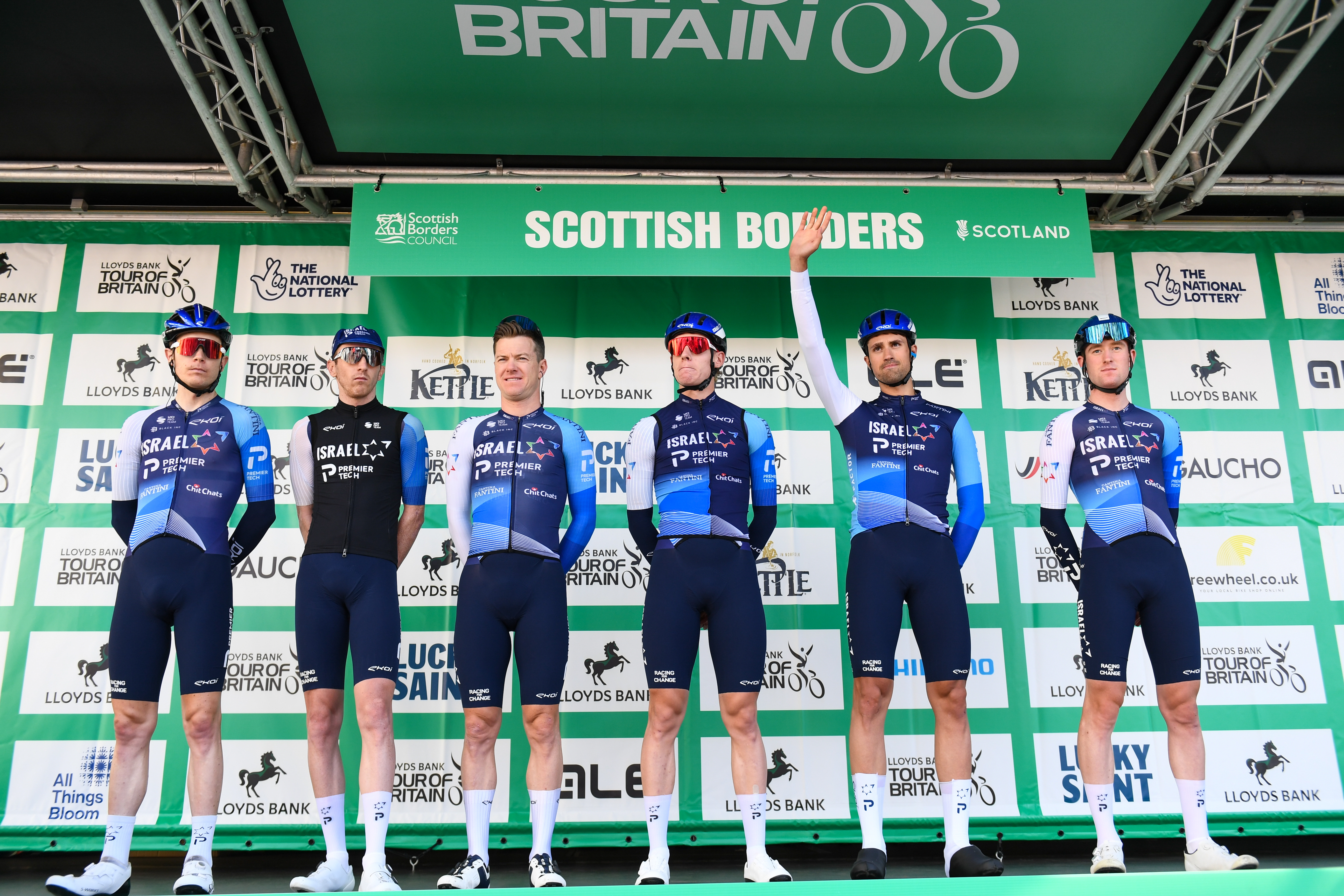 Protestors at Tour of Britain accuse Israel-Premier Tech of 'sportswashing'
Protestors at Tour of Britain accuse Israel-Premier Tech of 'sportswashing'Team says it is 'excited to race' and 'respects everyone's right to free speech'
By Tom Davidson
-
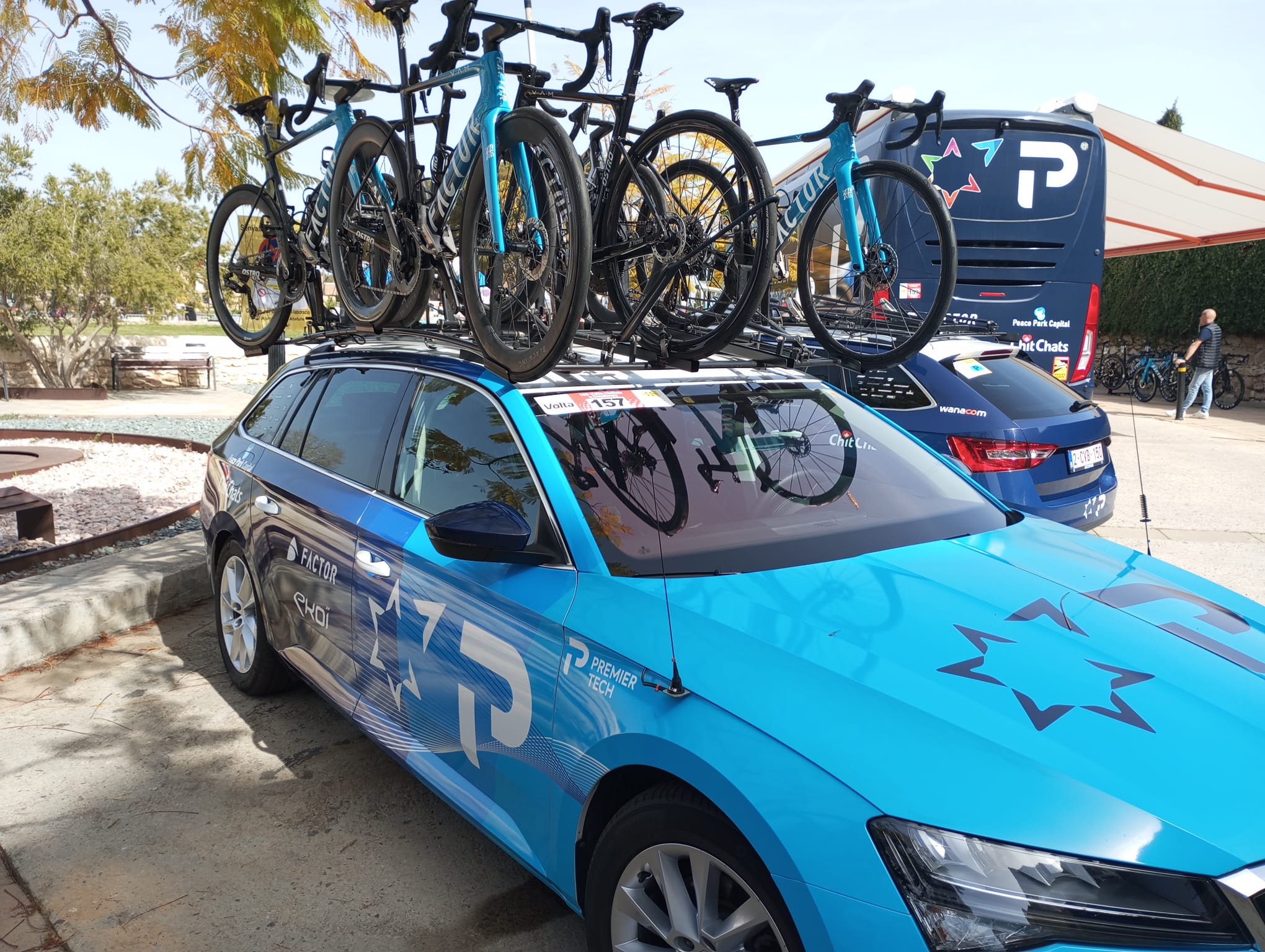 Pro-Palestine activists call for 'more protests than ever' against Israel-Premier Tech at Giro d'Italia and Tour de France
Pro-Palestine activists call for 'more protests than ever' against Israel-Premier Tech at Giro d'Italia and Tour de FranceIsrael-Premier Tech has already removed 'Israel' from team vehicles as part of 'precautionary measures'
By Adam Becket
-
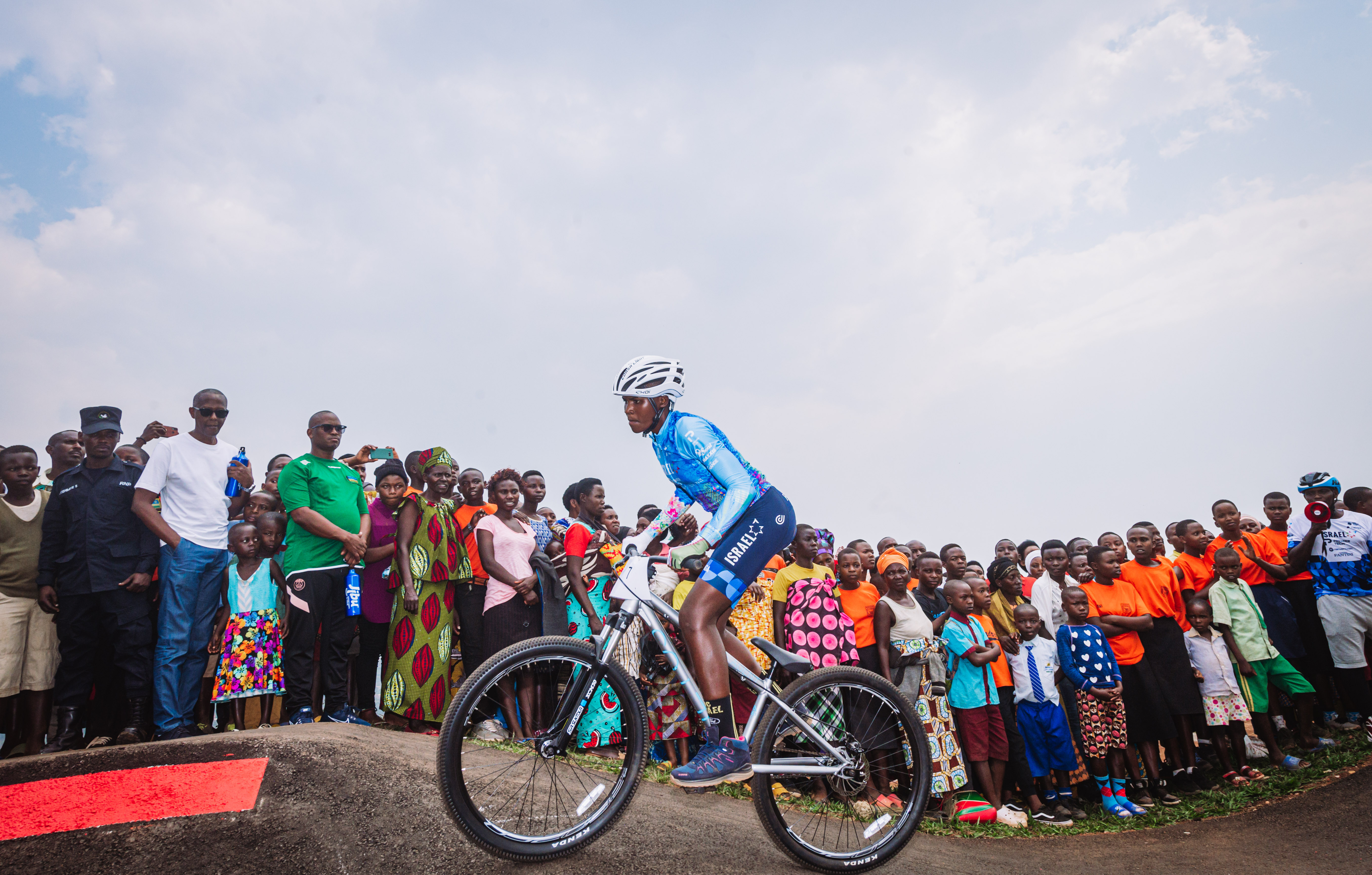 'We are just getting started': Israel-Premier Tech launches Field of Dreams project in Rwanda
'We are just getting started': Israel-Premier Tech launches Field of Dreams project in RwandaPump track and cycling course built in Bugesera to help develop cycling talent in central Africa
By Adam Becket
-
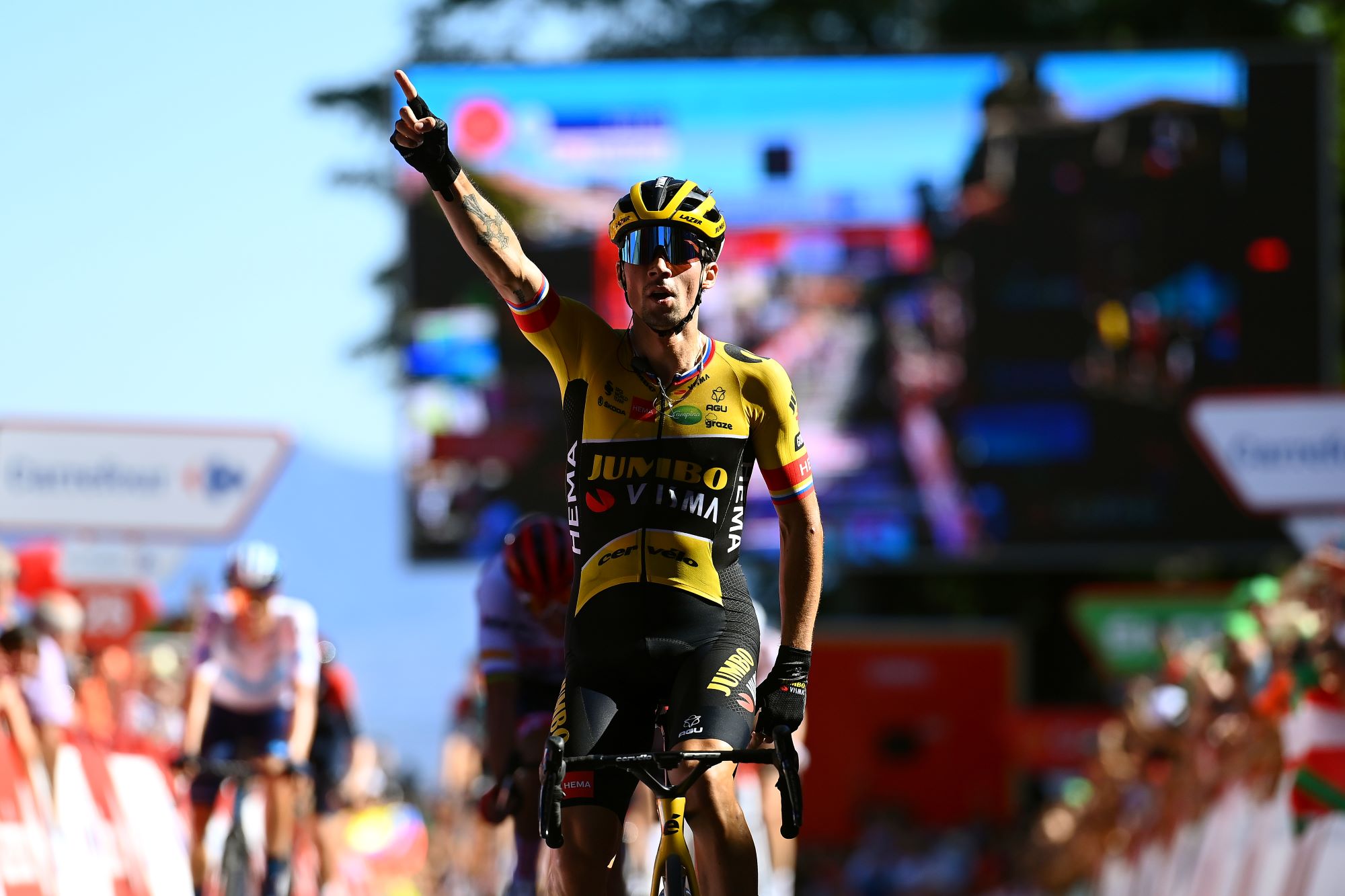 CW LIVE: Primož Roglič confirmed for Giro d'Italia 2023; Track rider hits 2,271 watts; NCL announces first two teams; Van Aert to ride cyclo-cross Worlds; Sram and Oakley team up with Jumbo-Visma; Rwanda unveils pump track: Evenepoel eyes Pogačar showdown
CW LIVE: Primož Roglič confirmed for Giro d'Italia 2023; Track rider hits 2,271 watts; NCL announces first two teams; Van Aert to ride cyclo-cross Worlds; Sram and Oakley team up with Jumbo-Visma; Rwanda unveils pump track: Evenepoel eyes Pogačar showdownJoin us as we round up the day's cycling news
By Tom Davidson
-
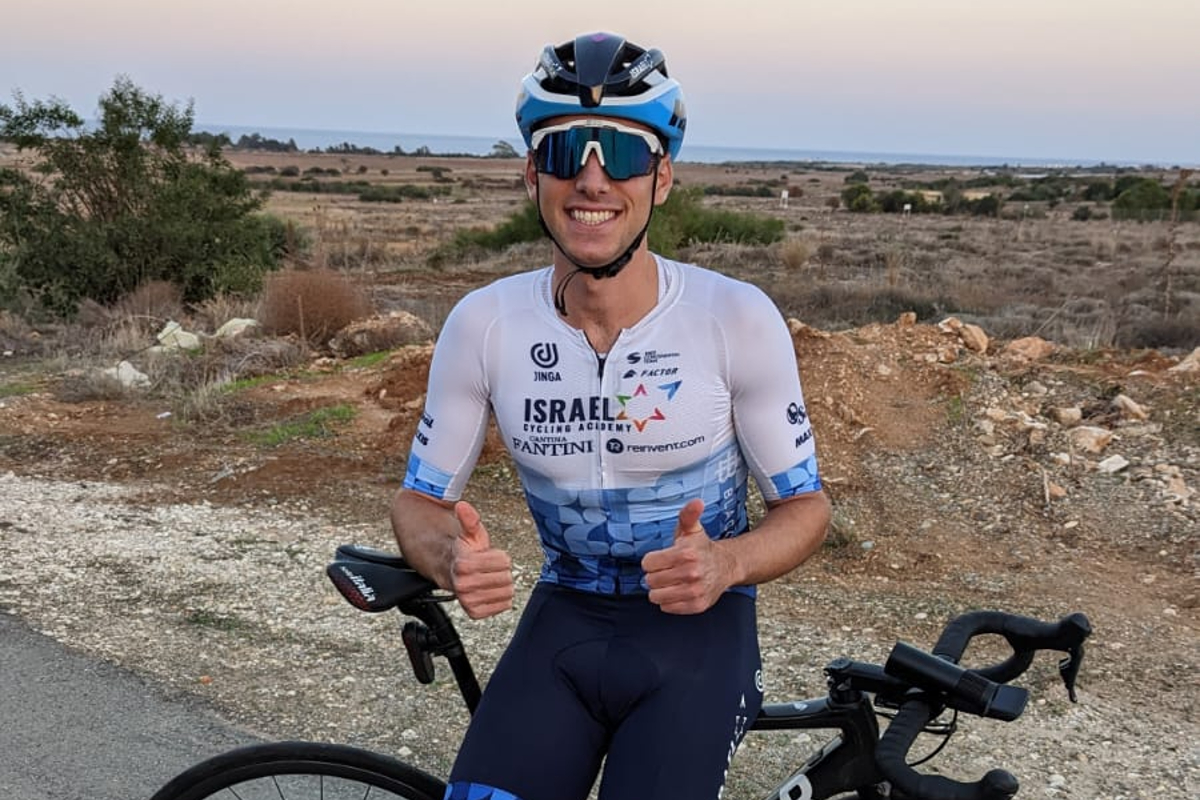 'It was Purgatory': Cancer survivor rides 627km around Cyprus in a day
'It was Purgatory': Cancer survivor rides 627km around Cyprus in a dayAlexandros Agrotis fought off fatigue to raise funds for thyroid cancer, which he had as a teenager
By Tom Davidson
-
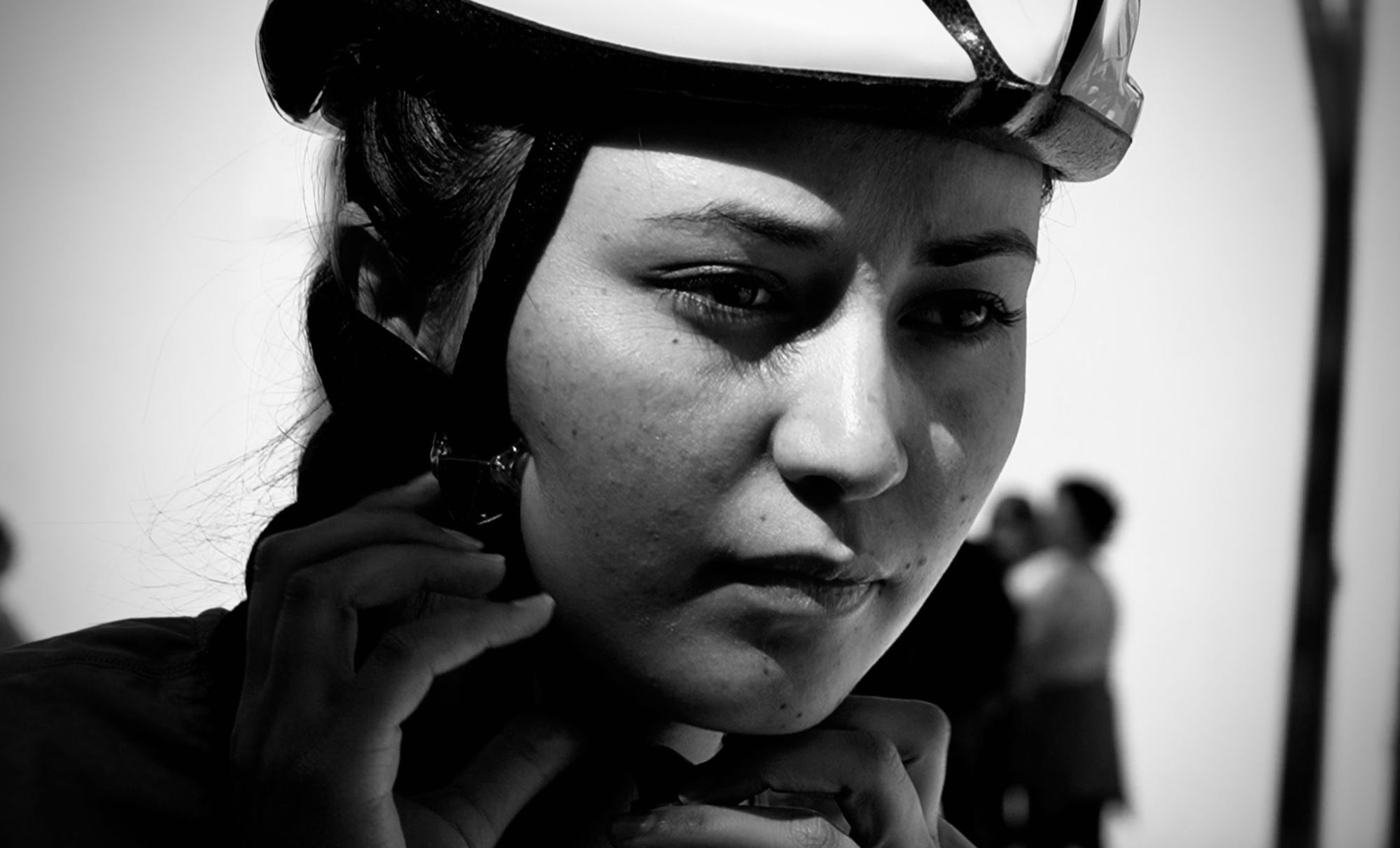 Freedom to cycle — The female Afghan refugees rediscovering life on the bike in Italy
Freedom to cycle — The female Afghan refugees rediscovering life on the bike in ItalyIsrael-Premier Tech helped bring a group of 70 Afghan refugees to Italy in July as part of helping wider resettlement efforts
By Tom Thewlis
-
 Teams target up to four races a day in relegation points scramble
Teams target up to four races a day in relegation points scrambleFor Lotto-Soudal and Cofidis, the racing is only just beginning
By Tom Davidson
-
 Israel-Premier Tech owner welcomes Afghan female cyclists and refugees in Italy after leading group's rescue
Israel-Premier Tech owner welcomes Afghan female cyclists and refugees in Italy after leading group's rescueTeam owner Sylvan Adams also highlighted his commitment to partner with two women's teams in 2023
By Ryan Dabbs